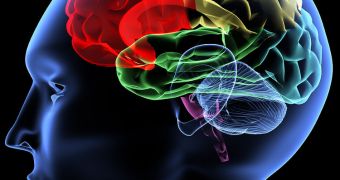An international team of researchers discovered in a new study that different parts of the human brain can evolve independently of each other. This conclusion could go a long way towards improving our understanding of the brain, the group explains.
Working together with colleagues in the United States, investigators at the University of Manchester, in the United Kingdom, conducted a 15-year study on this issue. The American component of the team included experts from the Harvard Medical School and the University of Tennessee.
During the same study, the experts were able to identify several genetic loci (locations of specific genes or DNA sequences on a chromosome) that apparently play a role in controlling the physical size of various parts of the brain, Science Blog reports.
The main purpose of the investigation was to figure out if the brain performs mosaic or concerted evolution. Answering this question could potentially help unlock a series of mysteries related to the human mind, the team says.
Mosaic evolution occurs when areas of the brain evolve independently of each other, under the drive of various stimuli (both internal and external). Concerted evolution occurs when the brain evolves as a whole, as a single organ.
Details of the new study appear in the latest issue of the top scientific journal Nature Communications.
During their experiments, researchers studied around 10,000 mice, measuring the volume and weight of seven individual parts of the unfortunate rodents' brains. With the exception of the Y chromosome, the entire genomes of the animals were also thoroughly analyzed.
“If all the different brain parts evolved as a whole we would expect that the same set of genes influences size in all parts. However, we found many gene variations for each different part of the brain supporting a mosaic scenario of brain evolution,” explains Dr. Reinmar Hager.
“We also found very little correlation between the size of the brain parts and the overall size of the brain. This again supports the mosaic evolutionary hypothesis,” adds the researcher, who is based at the University of Manchester Faculty of Life Sciences.
“If we can identify the specific genes that cause variations in the size of brain parts then there will be big implications for researchers looking at neuronal disease and brain development. We hope this research will significantly advance our understanding of the brain,” he concludes.

 14 DAY TRIAL //
14 DAY TRIAL //